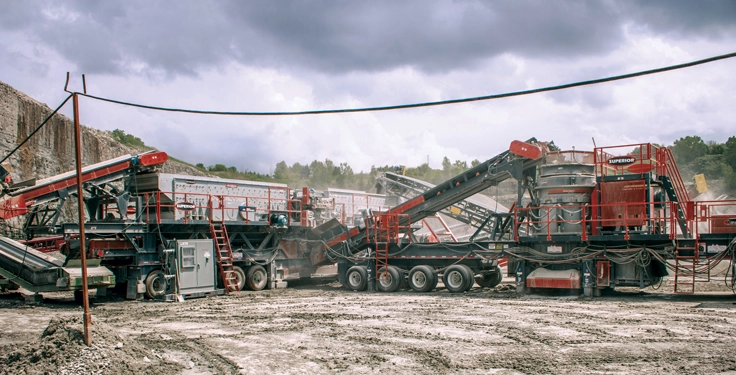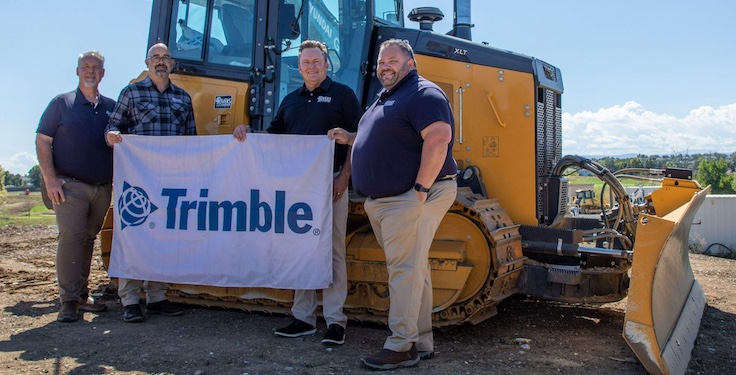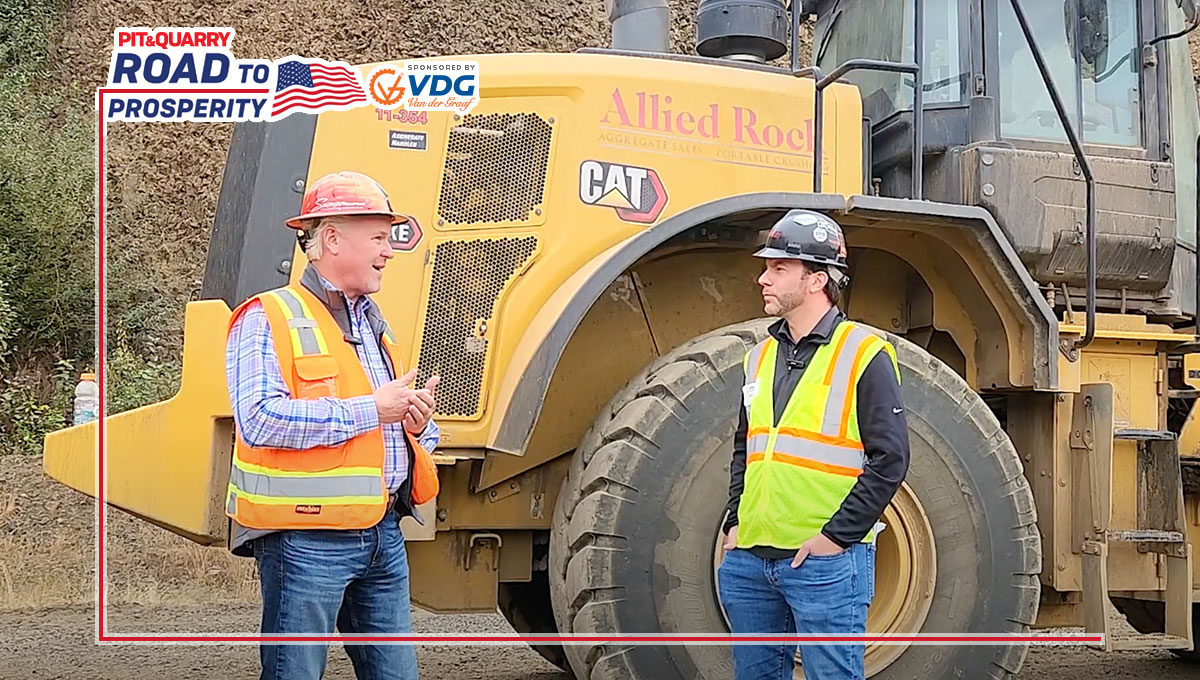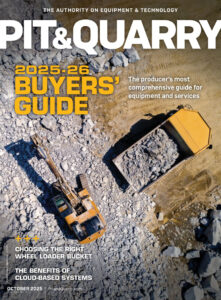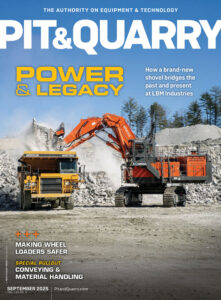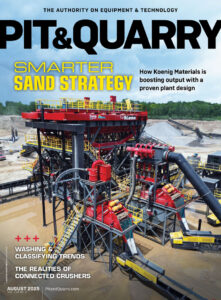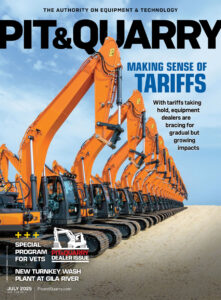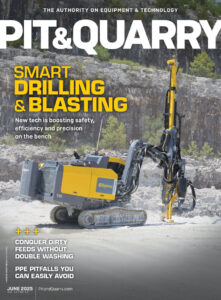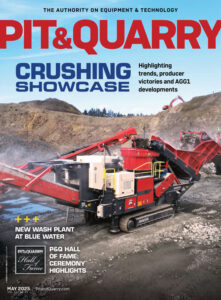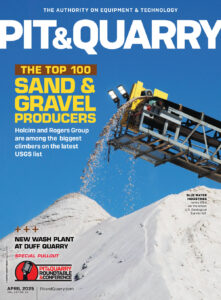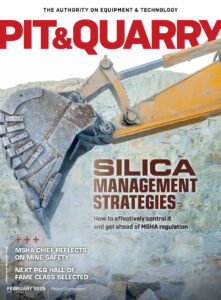Amid the upcoming AI revolution, it’s no surprise that automation technology is enhancing safety, cost-effectiveness and efficiency for cone crushers.
These autonomous advancements are giving portable and stationary crushing operations more value from their machines and manpower.
While the parameters of AI may still be unknown, the best cone crusher control platforms are not technically over the top, but user-friendly and easy to access and operate.
Here are 10 ways cone crusher control platforms drive safe, next-level efficiencies while delivering lower operating costs and greater plant uptime.
1. Enabling safe startup and shutdown. With a one-touch screen, control platforms protect cone crusher performance – offering safe control over motor starts and stops – in the proper sequencing and without operator intervention.
For safe startups, platforms monitor lubrication systems for proper temperature and flow before allowing crusher startup. For safe shutdowns, platforms automatically initiate proper sequencing by shutting off the feed, followed by the cone and the discharge.
2. Diagnosing abnormal wear. Automation systems track the time it takes for the crusher to shut down – from full RPM to full stop. This data helps operators diagnose abnormal bushing wear.
3. Preventing machine damage. Warning systems within control platforms alert operators to conditions such as bowl float, excessive amperage, elevated temperatures or lubrication issues, providing optimum component wear life while preventing costly damage and downtime.
4. Making setting adjustments. With cone crusher control platforms, operators can make setting adjustments on the fly, giving them flexibility over ongoing material feed changes and enabling easy processing tweaks to any plant circuit.
On older crushers, maintenance crews can only rely upon gauges to monitor operating parameters. The result is problematic, as older machines are typically not monitored or adjusted as often as they should be.
5. Maintaining desired feed levels. Recent automation upgrades feature an auto-feed function that maintains the desired material feed levels in the cone – regardless of any changes in feed. To ensure optimum efficiency, the cone crusher control platform will also maintain the desired amperage on the motor.
Via the automation platform, feed is easily controlled, keeping the cone crusher choke-fed. The belt feeder automatically speeds up or slows down depending upon amp draw and the fullness of the crusher cavity.
6. Accessing real-time data. Cone crusher control platforms monitor machine performance parameters in real time while correcting operational issues before a failure occurs.
Operators can easily monitor closed-side settings and are alerted in real time about any tramp or amperage events. This helps identify whether they’re encountering extremely hard material or too much recirculating load.
Control platforms also monitor amperage utilization and can automatically reduce the amp draw or send an alert if a component is overworked.
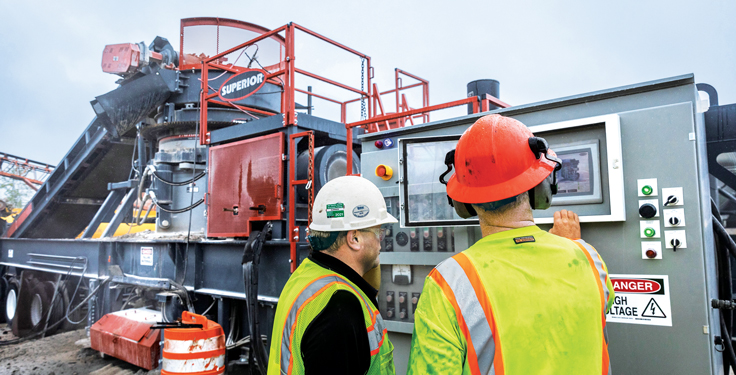
7. Compensating for liner wear. Control platforms may include auto-wear compensation. This targeted feature automatically compensates for liner wear by closing the machine down to maintain the desired closed-side settings.
8. Ensuring reliable performance. Automation platforms can detect potential bowl float (ring bounce or upper frame movement) that occurs when crushing action exceeds the design specifications of the cone. Most crushers are engineered to open due to tramp metal or an uncrushable, but no cone crusher is designed to operate safely with bowl float.
It’s hard to detect potential ring bounce even when standing right next to the cone, making the use of automated warning systems key to safe operation.
9. Keeping it simple. Past systems may feature dozens of separate conductor wires running from the PLC to each component. This is a complicated and time-consuming network to work with and maintain.
A simple sensor communication network accesses a standard four-wire cable system from the cone crusher to all auxiliary systems for a setup that streamlines diagnostics and troubleshooting.
10. Keeping it safe. The crew doesn’t have to manually interact with the machine and can monitor performance and complete all diagnostics right from the controls screen. Should an event occur, the system automatically shuts down the cone and the crusher feed.
Automation for all
Cone crusher automation technologies provide the machine data needed for predictive maintenance strategies that maximize wear parts, minimize downtime and prevent costly damage – all while driving increased safety, ongoing profitability and next-level crushing efficiency for all.
Carol Wasson is a veteran freelance writer for the aggregate and construction equipment industries.

